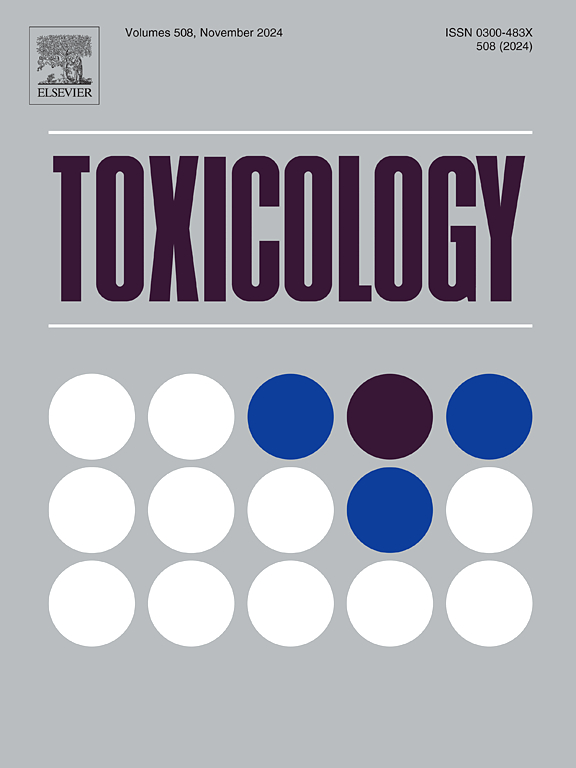Activation of α7 nicotinic acetylcholine receptor augments nerve growth factor action on PCtrk cells
IF 4.8
3区 医学
Q1 PHARMACOLOGY & PHARMACY
引用次数: 0
Abstract
Although cigarette smoking is known to be a critical risk factor for various organ systems and cancers, accumulating evidence indicates that nicotine – a main constituent of cigarette smoking – can exert neuroprotective effects on neuronal cells through nicotinic acetylcholine receptors (nAChRs). However, the precise molecular mechanisms for nicotinic neuroprotective actions remain to be fully elucidated. In this study, we examine the effects of agonists, such as nicotine and PNU282987, on tropomyosin-related kinase (Trk)-dependent neuroprotective pathways in PC12 cells overexpressing a Trk neurotrophin receptor (PCtrk cells). We found that even considerably higher concentrations (mM range for nicotine and µM range for PN282987) of nAChR agonists exert favorable effects, such as the augmentation of nerve growth factor (NGF)-induced Trk neurotrophin receptor autophosphorylation of tyrosine residues and NGF-induced neurite extension. Moreover, nicotine upregulated reactive oxygen species (ROS) levels in the cells. ROS production was completely cancelled by pretreatment with Mito-Tempo, a mitochondria-targeted antioxidant, indicating that the main source of ROS production by nicotine was mitochondria. Furthermore, treatment with nAChR agonists appeared to induce autophagic flux, as evidenced by the upregulation of LC3-II expression in cells. Furthermore, sucrose density ultracentrifugation of nicotine-treated cells clearly disclosed the augmented recruitment of α7nAChR protein into the lipid rafts fraction of the membrane. Intriguingly, a pull-down assay of anti-Trk antibody immunoprecipitates clearly included α7nAChR protein, indicating that Trk and α7nAChR proteins form a complex. These results reveal a new molecular interaction between activated α7nAChR and Trk protein that may serve as a new molecular basis of nicotine-induced neuroprotective action.
激活α7烟碱乙酰胆碱受体可增强神经生长因子对 PCtrk 细胞的作用
众所周知,吸烟是导致各种器官系统和癌症的重要危险因素,但越来越多的证据表明,尼古丁--吸烟的主要成分--可以通过尼古丁乙酰胆碱受体(nAChRs)对神经细胞产生神经保护作用。然而,尼古丁神经保护作用的确切分子机制仍有待全面阐明。在本研究中,我们在过表达 Trk 神经营养素受体的 PC12 细胞(PCtrk 细胞)中研究了尼古丁和 PNU282987 等激动剂对肌球蛋白相关激酶(Trk)依赖性神经保护途径的影响。我们发现,即使浓度相当高(尼古丁在 mM 范围内,PN282987 在 µM 范围内)的 nAChR 激动剂也能产生有利影响,如增强神经生长因子(NGF)诱导的 Trk 神经营养素受体酪氨酸残基自磷酸化和 NGF 诱导的神经元延伸。此外,尼古丁还能提高细胞中的活性氧(ROS)水平。使用线粒体靶向抗氧化剂 Mito-Tempo 进行预处理可完全消除 ROS 的产生,这表明尼古丁产生 ROS 的主要来源是线粒体。此外,nAChR 激动剂似乎能诱导自噬通量,细胞中 LC3-II 的表达上调就是证明。此外,对尼古丁处理过的细胞进行蔗糖密度超速离心清楚地显示,α7nAChR 蛋白被更多地吸收到膜的脂质筏部分。耐人寻味的是,抗Trk抗体免疫沉淀物的牵引试验清楚地显示了α7nAChR蛋白,这表明Trk和α7nAChR蛋白形成了复合物。这些结果揭示了活化的α7nAChR和Trk蛋白之间新的分子相互作用,这可能是尼古丁诱导神经保护作用的新的分子基础。
本文章由计算机程序翻译,如有差异,请以英文原文为准。
求助全文
约1分钟内获得全文
求助全文
来源期刊

Toxicology
医学-毒理学
CiteScore
7.80
自引率
4.40%
发文量
222
审稿时长
23 days
期刊介绍:
Toxicology is an international, peer-reviewed journal that publishes only the highest quality original scientific research and critical reviews describing hypothesis-based investigations into mechanisms of toxicity associated with exposures to xenobiotic chemicals, particularly as it relates to human health. In this respect "mechanisms" is defined on both the macro (e.g. physiological, biological, kinetic, species, sex, etc.) and molecular (genomic, transcriptomic, metabolic, etc.) scale. Emphasis is placed on findings that identify novel hazards and that can be extrapolated to exposures and mechanisms that are relevant to estimating human risk. Toxicology also publishes brief communications, personal commentaries and opinion articles, as well as concise expert reviews on contemporary topics. All research and review articles published in Toxicology are subject to rigorous peer review. Authors are asked to contact the Editor-in-Chief prior to submitting review articles or commentaries for consideration for publication in Toxicology.
 求助内容:
求助内容: 应助结果提醒方式:
应助结果提醒方式:


